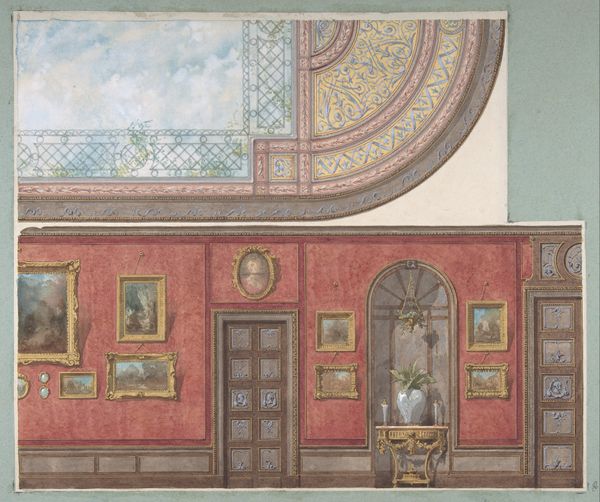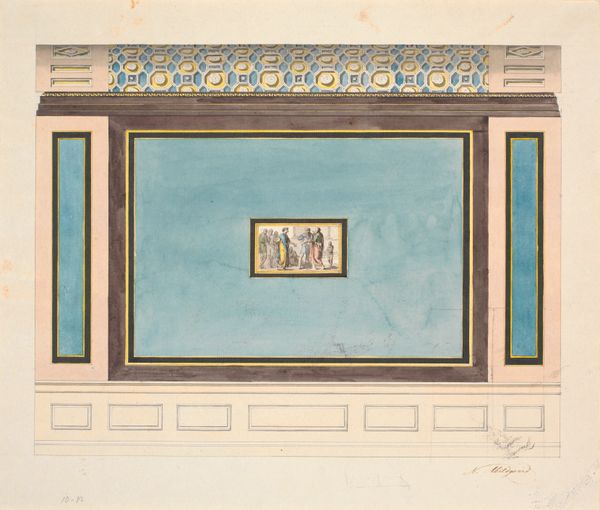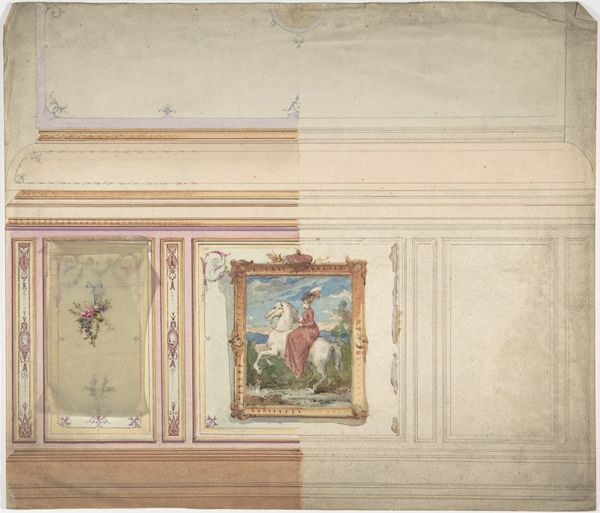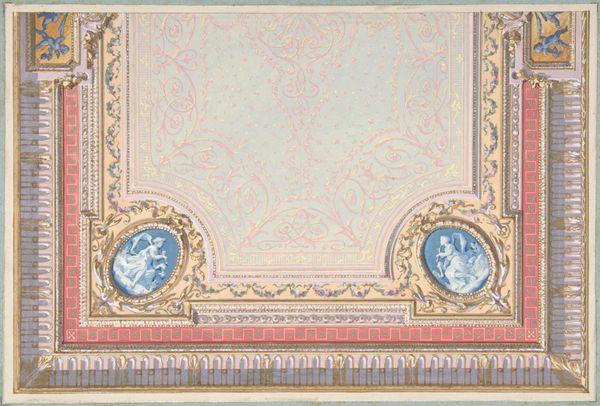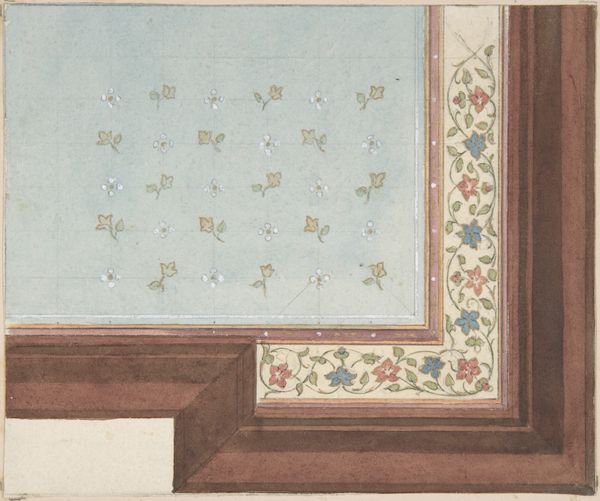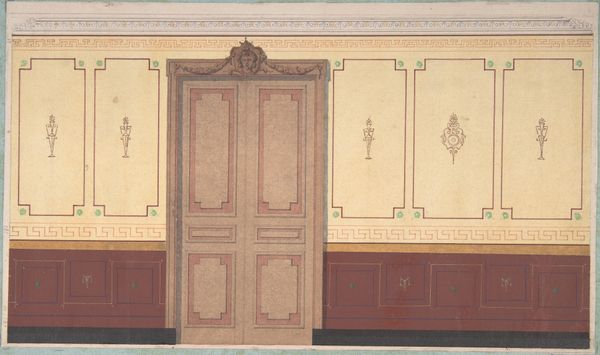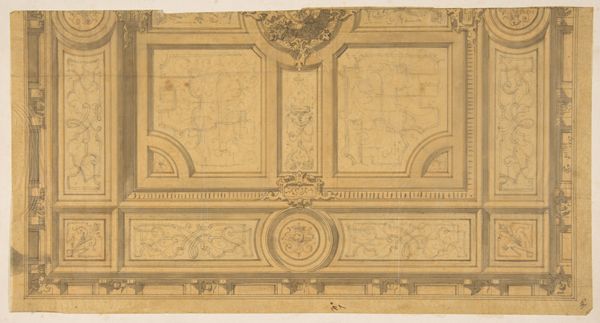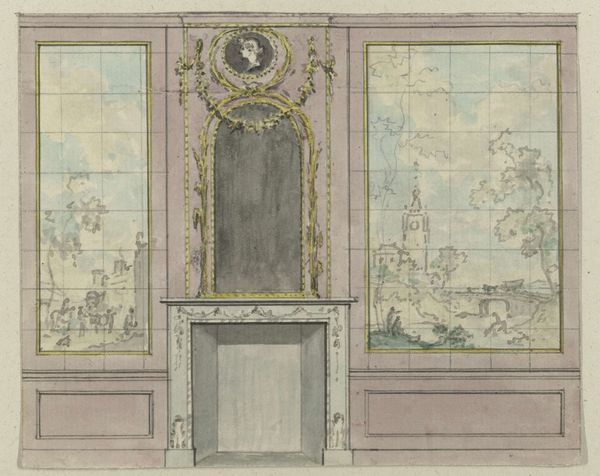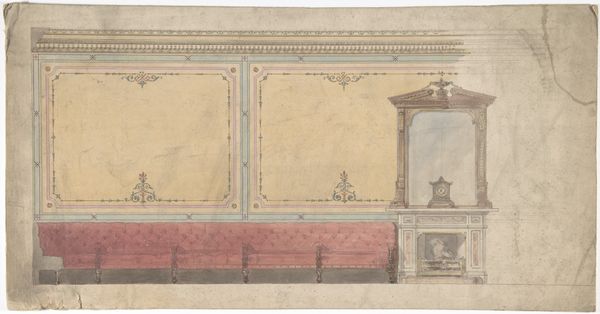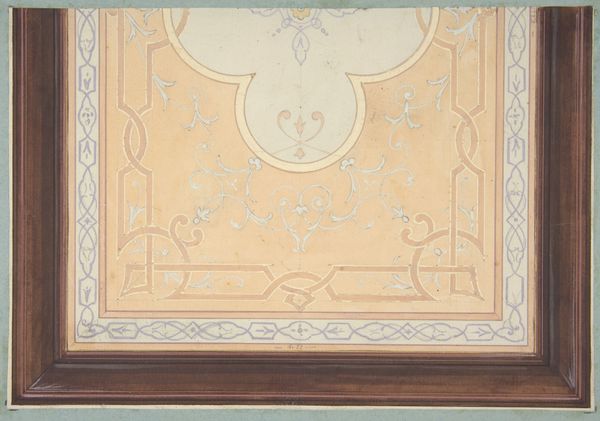
Ceiling Design for Bedroom of Duchesse de Newcastle, Hôtel of Madame Hope 1862 - 1872
0:00
0:00
drawing, ornament, tempera, print, fresco
#
drawing
#
ornament
#
tempera
#
neoclassicism
# print
#
fresco
#
decorative-art
Dimensions: 13 1/2 x 19 7/16 in. (34.3 x 49.3 cm)
Copyright: Public Domain
Editor: This is a ceiling design for the bedroom of the Duchesse de Newcastle, created sometime between 1862 and 1872 by Jules-Edmond-Charles Lachaise. The patterns and muted tones give it such a delicate feel, but also a formality indicative of Neoclassical style. How would you interpret this work in the context of its time? Curator: This drawing provides insight into the domestic lives of elite women of the era and speaks to their identities and positions in society. Do you notice the motifs present? Editor: Yes, there are several framed cameos that appear to depict women, and there’s what looks like a crest held by two cherubic figures. Curator: Exactly. These aren’t merely decorative elements. They function as signifiers of power and lineage. Consider the Duchess herself and the layers of identity and expectations placed upon her. How does this elaborate ceiling, a very private, domestic space, become a canvas for asserting social standing? Editor: So the intimacy of the bedroom almost amplifies the statement being made. It’s not just about public display, but about embedding status into one's most personal environment. Curator: Precisely. The seemingly innocuous aesthetic becomes a visual language reinforcing hierarchy, and reminding us that even within the private sphere, societal roles are constantly being negotiated and reinforced. Editor: That definitely changes how I see this drawing. It’s not just a pretty ceiling; it’s a statement. Curator: And a reminder that the decorative arts, often dismissed as purely ornamental, can be rich sites of cultural and social commentary. Editor: I’ll definitely keep that in mind moving forward. It really highlights how crucial it is to examine historical and social context, as it adds more dimensions.
Comments
No comments
Be the first to comment and join the conversation on the ultimate creative platform.
